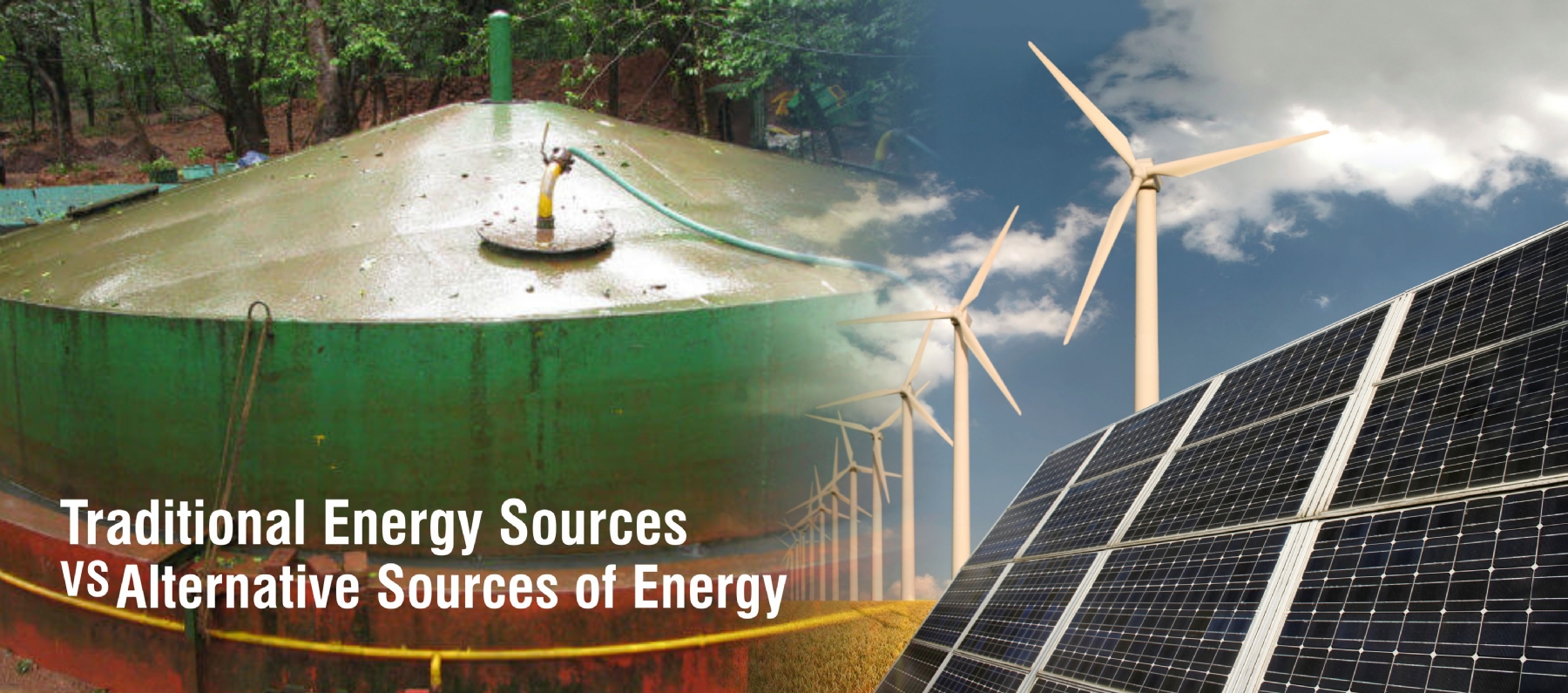Traditional Energy Sources VS Alternative sources of energy

Traditional Energy Sources VS Alternative sources of energy
This article will indicate WHY alternative energy strategies are important to you as an individual, family leader and workplace decision maker.
The traditional sources of energy are generally non-renewable sources of energy, which are being used since a long time. These sources of energy are being used extensively in such a way that their known reserves have been depleted to a great extent. At the same time, it is becoming increasingly difficult to discover and exploit their new deposits. It is envisaged at known deposits of petroleum in our country will get exhausted by the few decades and coal reserves are expected to last for another hundred years. The coal, petroleum, natural gas and electricity are traditional sources of energy. Example include: fossil fuels, Coal, Oil and Natural Gas, etc.
The age of the organisms and their resulting fossil fuels is typically millions of years, and sometimes exceeds 650 million years. Fossil fuels contain high percentages of carbon and include petroleum, coal, and natural gas.
Coal:
Coal is one of the most important sources of energy and is being used for various proposes such as heating of housed, as fuel for boilers and steam engines and for generation of electricity by thermal plants. Coal has also become a precious source of production of chemical of industrial importance coal is and will continue to be the mainstay of power generation in India. It constitutes about 70% of total commercial energy consumed in the country.
Oil and Natural Gas:
Like coal, petroleum is also derived from plants and also from dead animals that lived in remote past. Natural gas has also been produced in the Earth's curst by the similar process as petroleum and this is also a combustible fuel. The exploitation of oil on a large scale started after 1960, the year when the first commercial well is reported to have come into existence. In India, efforts made by the Oil and Natural Gas Corporation since the late 1950s have led to the identification of a number of oil and gas deposits both offshore and onshore. Natural gas is also emerging as an important source of energy in India's commercial energy scene in view of large reserves of gas that have been established in the country.
Electricity:
It is another traditional source of power, which is playing a barometer of a nation's economic well-being. There are various sources from which electricity is being produced. Depending upon raw material used, there are three types of electricity (1) Hydroelectricity (ii) Thermal electricity (steam, gas, oil) (iii) Nuclear electricity.
Now, the question which is come to the mind, what are the non- traditional (alternative) sources of energy? Energy that is not popularly used and is usually environmentally sound, such as solar or wind energy (as opposed to fossil fuels). Fuel sources that are other than those derived from fossil fuel. Typically used interchangeably for non- traditional energy. Example include: wind, solar, biomass, wave & tidal energy. Wind, solar, geothermal, hydrogen and biomass play an important role in the future of our nation.
Wind energy uses the energy in the wind for practical purposes like generating electricity, charging batteries, pumping water, or grinding grain. Wind turbines convert the kinetic energy of the wind into other forms of energy. Large, modern wind turbines operate together in wind farms to produce electricity for utilities. Small turbines are used by homeowners and remote villages to help meet energy needs. Biomass is used to produce biofuels such as ethanol (from biomass residues as well as grain) and renewable diesel; and for making plastics and chemicals from renewable, bio based materials. Bioenergy technologies use renewable biomass resources to produce an array of energy related products including electricity, liquid, solid, and gaseous fuels, heat, chemicals, and other materials.
Solar technologies that take advantage of the clean abundant energy of the sun are important to reducing greenhouse gasses and helps stimulate the economy. Low-temperature solar collectors also absorb the sun's heat energy, but the heat is used directly for hot water or space heating for residential, commercial, and industrial facilities.
Geothermal energy is the heat from the Earth. It's clean and sustainable. Resources of geothermal energy range from the shallow ground to hot water and hot rock found a few miles beneath the Earth's surface, and down even deeper to the extremely high temperatures of molten rock called magma.
Hydrogen is a clean energy carrier (like electricity) made from diverse domestic resources such as renewable energy (e.g. solar, wind, geothermal), nuclear energy, and fossil energy (combined with carbon capture/sequestration). Hydrogen in the long-term will simultaneously reduce dependence on foreign oil and emissions of greenhouse gases and criteria pollutants.
Nearly 100 per cent of the state's transportation system is fuelled currently by fossil fuels. This is definitely not good for environment as well as for us too. It is high time we start moving toward a more diversified approach to fuels and supporting the advancement of alternative sources of energy.